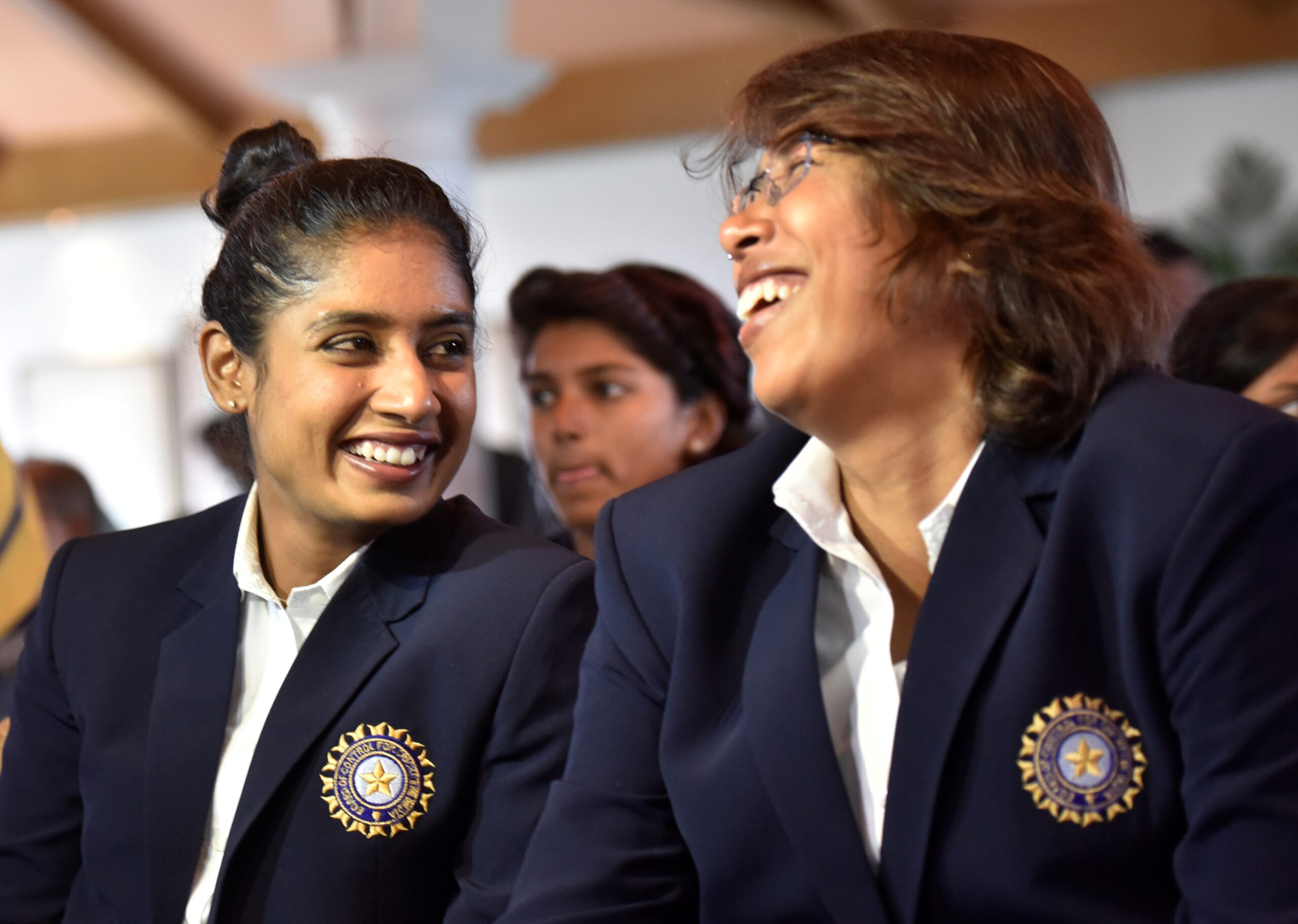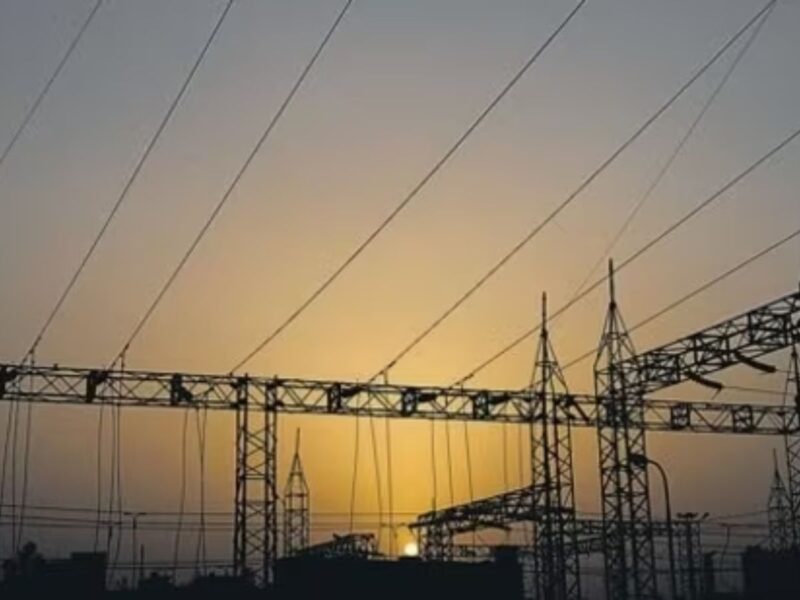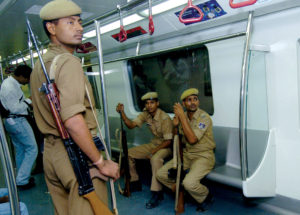There is a famous saying in cricket: ‘It’s all about partnerships’. This is even more relevant when it comes to women’s cricket in India. It’s been two decades now that Mithali Raj and Jhulan Goswami have been sharing the dressing room at the international level. And what a bond they’ve formed, when you consider they’ve competed in four One-day World Cups and five T20 World Cups.
There is nothing that these two veterans have not experienced together on a cricket field. Having reached the final twice in the ODI World Cups, the desire to win it once is still burning inside the bellies of both these experienced campaigners as the Indian women are locking horns with the best of the world in the ongoing World Cup in New Zealand.
If Mithali broke the record for most matches as captain at the WWC, then Jhulan became the tournament’s leading wicket-taker during the ongoing tourney.
In fact, Mithali was also the one to lead the Indian eves in 2005. Her illustrious career, spread across 23 years, has seen her evolve from a teenage prodigy to this powerful stateswoman, who has been the face of Indian women’s cricket all this while.
Every time this Hyderabadi walks onto the field, she creates a new record. When she walked out to flip the coin for the 24th time during this WC, it was a milestone to be proud of. No other woman captain in the world has had the opportunity to do so in the game’s history.
Mithali and Jhulan are both 39 now and staring at retirement after this ongoing World Cup. Other players are now ready to take their places in the team. Thanks to the contribution of these two stalwarts, the next generation of players like Smriti Mandhana and Harmanpreet Kaur are likely to dominate the game for a long time.
The batting prowess of these two was there to be seen during the crunch game against the West Indies recently. After that crushing defeat to New Zealand by 62 runs, the two young batters scored tons to give the women in blue a badly-needed win against the Caribbean to put their WC campaign on track.
Both have learnt the art of building partnerships and camaraderie from none other than stalwarts like Mithali and Jhulan.
That’s why it was a rare gesture from Smriti after her 123-run innings against the Windies that she chose to share her Player of the Match award with her partner Harmanpreet for her determined 109 to bring India back into the tournament.
Just two days after that heartbreaking defeat against the Kiwis, Smriti said that her 123 would have mattered little against an undefeated West Indian side had fellow centurion Harmanpreet not done her bit to put in that big partnership of 184. So, Mandhana had Harmanpreet by her side at the presentation ceremony, where she explained why she felt “they both were equally deserving of the honour”.
But more than the records, it has been the impact Mithali has had on this entire generation of young girls who have picked up a bat after watching her dominate the game at the world level. In simple words, Mithali’s contribution to Indian women’s cricket is no less than that of the maestro Sachin Tendulkar.
Such has been the effect she has had on the upcoming cricketers that every time you watch her play alongside any young batter, the way she takes them along and guides them in building partnerships, it’s a learning experience for every budding cricketer.
Fast ‘n’ furious
If Mithali captained India for the first time at the 2005 World Cup, it was in that very tournament in South Africa that Jhulan took her first World-Cup wicket of Inoka Galagedara of Sri Lanka.
Seventeen years later, she has surpassed the record of Lynette Fullston of Australia by grabbing her 40th wicket at Hamilton. She has dismissed 40 different batters, never getting the same one out twice at a World Cup.
Now that WWC is halfway through, except for Australia with all four wins, no other team can afford to lose focus at this particular point of time. Indian women have been looking forward to wreaking vengeance on England in the 2017 finals on Wednesday.
Mithali’s team played England in a three-match ODI series in June-July last year, in which England won 2-1. India have made some changes to their batting order since then, but have fielded more or less the same squad in the World Cup till now. On the other hand, England have made just one change by bringing in Charlotte Dean in place of Sarah Glenn.
England’s run so far has been full of surprises. The defending champions were first beaten comprehensively by Australia and then grounded by teams like the West Indies and South Africa.
India defeated Pakistan in their tournament opener but were vcrushed by New Zealanders in their next. Kiwis posted 260 for nine in 50 overs to set a target of 261 runs for India. Chasing a target of 261, India were bowled out for 198 in 46.4 overs.
The way women’s cricket is getting attention with each passing day and the way the gap is decreasing between each team, the Indian team has to search for a dependable all-rounder soon.
Right now, India has Pooja Vastrakar and Sneh Rana as bowling all-rounders. Their batting abilities have seen India cruise to crucial wins in recent times. Both found their feet in international cricket with stellar performances in England and Australia. Deepti Sharma is another one with much-needed experience at the top level.
It’s high time the Indian team gets a good mix of specialists and multi-dimensional players.
Money talks
Indian women’s cricket has come a long way since the 1980s, when players were financing their own trips, travelling in trains, lugging their cricket kits.
Thankfully, the scenario is transformed now.
The women’s cricket board, which used to work independently from the men’s cricket board, BCCI, has now been merged with it. This is all for the good. This has allowed women’s cricket to make rapid strides in recent years in terms of financial stability.
However, there is still a huge gap between the two. For example, Smriti Mandhana may be the highest paid women’s cricketer in India, but her contract is still poorer than that of yesteryear’s male stars like Sachin Tendulkar or Sourav Ganguly in 2004. That’s because BCCI pays 26% of its revenue every year to its players.
Domestic players receive 13% of this, while men receive 10.3%. It is the remaining 2.7% that goes to junior players and women cricketers.
The Indian women’s team won prize money of Rs 3.75 crore after finishing runners-up in the 2020 T20 World Cup. In comparison, the men’s team got Rs 41.63 crore as prize money after the 2021 T20 World Cup.
Not to forget that Team India exited at the group stage.
According to rough estimates, an Indian male cricketer gets match fees of Rs 15 lakh to play a Test, Rs 6 lakh to play an ODI and Rs 3 lakh to play a T20I. However, when it comes to women cricketers, the payment is around Rs 20,000 per day, which can be compared to the wage of an under-19 male cricketer.
Nevertheless, the base salary of women cricketers has gone up many folds in recent years under the BCC.
Comparison between men’s & women’s players in 2021-22
Women
Category A: Rs 50 lakh
Category B: Rs 30 lakh
Category C: Rs 10 lakh
Men
Category A+: (Rs 7 crore)
Category A: Rs 5 crore
Category B: Rs 3 crore
Category C: Rs 1 crore
For more stories that cover the ongoings of Delhi NCR, follow us on:
Instagram: https://www.instagram.com/thepatriot_in/
Twitter: https://twitter.com/Patriot_Delhi
Facebook: https://www.facebook.com/Thepatriotnewsindia





